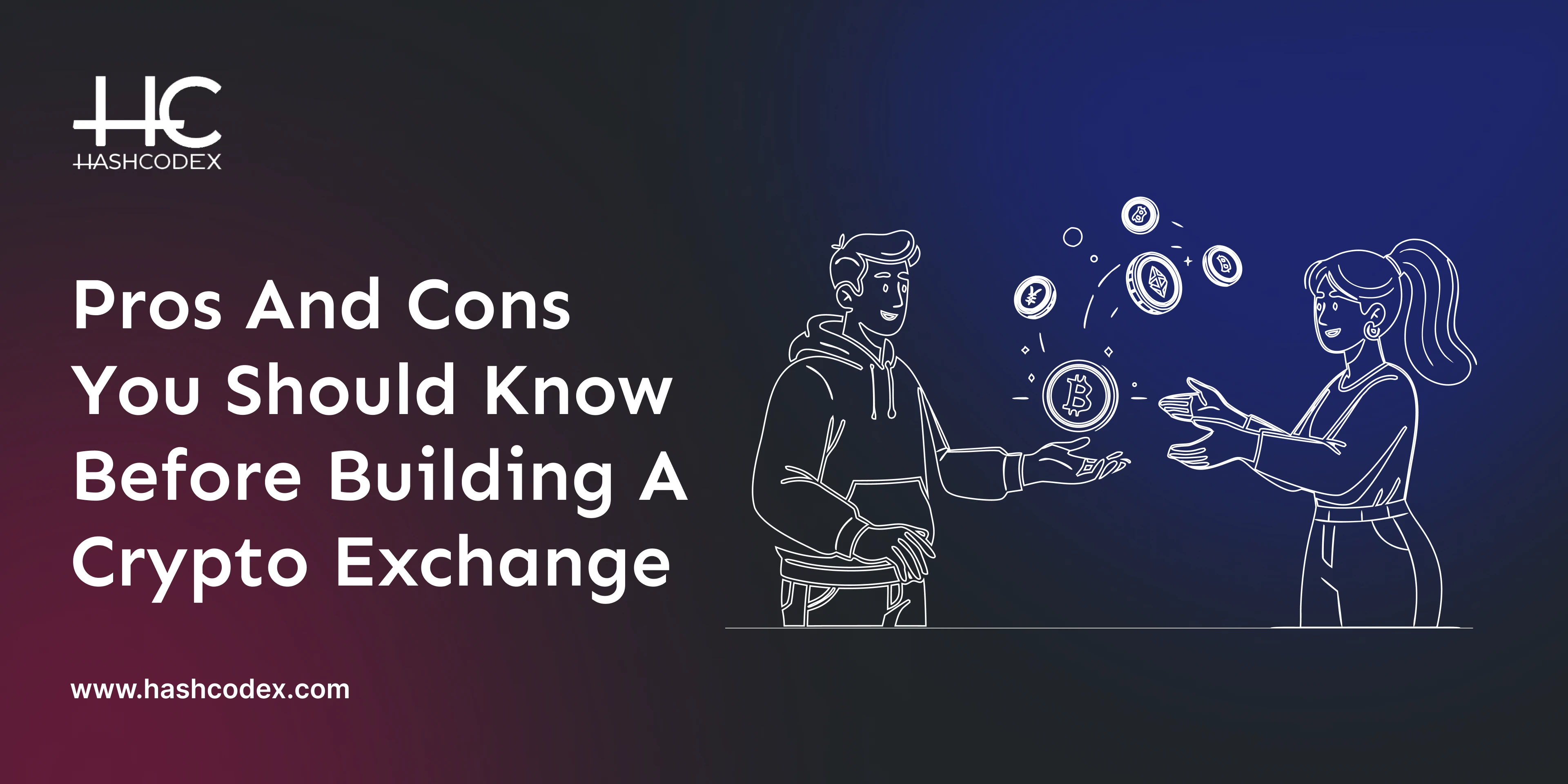Did you know people trade over $100 billion worth of crypto every month, without using a bank or middleman?
That's the power of DEXs, the silent engine behind the most exciting things happening in Web3 today. While NFTs make headlines and blockchain games gain popularity, DEXs quietly keep the whole Web3 ecosystem moving forward.
In this blog, you’ll learn what a DEX does and its role in Web3 production. Whether you're just stepping into Web3 or looking to understand how everything works together, this guide will show how DEXs help Web3 work securely without borders.
Keep reading to know more!
Understanding the Web3 Ecosystem
Web3 is a blockchain-based internet for users who value control, ownership and privacy. In Web 2, large companies control the platforms and the data. Web3 shifts the power to users through decentralization and personal ownership.
It includes tools like crypto wallets, decentralized apps (dApps), smart contracts, NFTs, and DAOs. All of these parts work together to build an open, permissionless system where users can own digital assets, communicate directly without intermediaries, and maintain authority over their data and money.
👉 Need help designing your Web3 product? Book a free demo!
What Is a DEX?
A DEX (Decentralized Exchange) lets users trade crypto directly, offering full control, lower fees, and no middlemen, great for Web3 and DeFi users. DEXs use smart contracts to automate and protect peer-to-peer transactions on public blockchains such as Ethereum and Binance Smart Chain. This means users have complete control over their assets and private keys, which improves security and reduces the chance of hacking or custodial failures.
Most DEXs use automated market makers (AMMs), which allow users to trade against liquidity pools instead of traditional order books. They can take some time to understand, particularly for beginners; however, many platforms are becoming more user-friendly.
The Role of DEX in Full Web3 Product Ecosystem
Whether it’s a game, a finance app, a social platform, or a DAO (decentralized autonomous organization), all Web3 products depend on one crucial piece of infrastructure: the DEX (Decentralized Exchange). Here's how a DEX fits into the bigger Web3 trend:
The Gateway to Web3 Assets
DEXs make it easy for users to buy, sell, trade or swap tokens quickly without going through a centralized platform. A DEX often acts as the first place for new DeFi tokens, game utility coins, and DAO governance tokens.
Connecting Wallets, Not Accounts
Users don’t need to register or share personal information on DEXs, like centralized exchanges. They connect directly to your crypto wallet, like MetaMask, and help to stay in control. It is perfect for dApps, NFT markets, and other Web3 products that require wallet-based access.
Fueling DeFi Applications
Many DeFi products, including lending platforms, yield farms, and stablecoin protocols, depend on DEXs to operate. For example, when users take out a crypto loan, the platform could use a DEX to quickly exchange their assets.
Helping DAOs and Communities Grow
Decentralized Autonomous Organizations (DAOs) frequently generate their own tokens. DEXs allow them to distribute their tokens, reward members, and raise funding. There are no middlemen, only smart contracts and the community.
Curious to know how smart contracts work in DEX? Click here 👉
Supporting Games, NFTs, and the Metaverse
Users earn or buy digital assets through blockchain games or metaverse projects. DEXs enable these tokens to be traded freely, converting in-game rewards into real money. Some games even use DEXs to improve in-game economies.
Always Open, Always On
A DEX doesn't close. It does not cause account freezes. It does not need permission. It operates 24/7 on the blockchain, making it a reliable and unstoppable engine for all types of Web3 apps.
A DEX is more than just a platform for trading tokens; it's a bridge that connects everything in Web3: applications, users, tokens, wallets, and communities. Without it, the ecosystems would be disconnected, slow and constrained.
Core Features of a Decentralized Exchange
Decentralized Exchanges (DEXs) are built with powerful features that make them a key part of the Web3 ecosystem. Let’s break down what makes a DEX truly decentralized and useful:
- Automated Market Makers (AMMs) or Order Book Systems
Choose between order book systems (like dYdX) or AMM models (like Uniswap) based on your target users. AMMs are easy to launch and provide quick, cost-saving exchanges. Order books provide greater control and are preferred by professional traders.
- Permissionless Token Listing
Integrating smart contract-based listing techniques will allow projects to list their tokens without requiring manual approval. It speeds up adoption, supports early-stage tokens, and attracts new people to your platform.
- Liquidity Pool & Incentive Mechanisms
Create strong liquidity incentives like as yield farming, staking, and dual rewards to draw in token providers and ensure smooth trade. No liquidity means no trade. Incentives help in launching the ecosystem in its early phases.
- Cross-Chain or Multi-Chain Support
Integrate bridgeless cross-chain swaps or native multi-chain compatibility (for example, using LayerZero, Wormhole, or Cosmos SDK). A multi-chain DEX stands out in a decentralized ecosystem, attracting a larger user base.
- Governance & Token Utility
Design a native utility/governance token that offers holders voting rights on platform options (such as fee increases or new features). Involving the community promotes trust, decentralizes control, and increases long-term retention.
👉 Want a DEX with these features? Schedule a free consultation with our team.
The Pros and Cons of DEXs in Web3 Technology
Decentralized Exchanges are a big part of what makes Web3 exciting. While they offer many advantages like transparency and control, they also come with certain challenges. Let’s break it down:
✅ Pros of DEXs
Instant Market Creation
Anyone can create a new trading pair without looking for permission. This makes DEXs an innovative platform, allowing new tokens and micro-economies to develop overnight.
Zero Downtime
DEXs run on decentralized networks that do not go offline. The exchange works as long as the blockchain is active, there are no maintenance windows, no shutdowns, and no dependency on a company.
No Biased Listings or Delistings
Centralized platforms list or remove tokens according to business dealings, but DEXs are designed to be neutral, allowing token access through code rather than company choices.
Resilience Against Political and Financial Censorship
DEXs are difficult for authorities to shut down or restrict, making them very resistant to censorship, especially in financially restricted places.
Transparent Fee Structure
Every fee, split, and token transfer is recorded on the blockchain. There are no hidden fees, markups, or special treatment for specific users.
❌ Cons of DEXs
Fake or Risky Token Listings
Because anyone may list a token, DEXs often include unidentified or scam tokens. Without proper screening, users can easily fall into traps.
Difficulty in Handling Complex Orders
DEXs are not well suited for advanced trading features like stop-loss, trailing orders, or leverage trading. Complex layers are usually needed to build custom features.
Separated Liquidity Across Chains
With so many blockchains in use, liquidity might be divided among many versions of the same DEX, making deep trade volume difficult to sustain.
Onboarding Can’t Be Customized
DEXs avoid central control; it is difficult to customize the user experience, no customized support, account-based preferences, or assistance if anything goes wrong.
Risk of Permanent Code Bugs
A deployed smart contract cannot be modified unless upgrades are scheduled in advance. A single logic error could stay on-chain forever, influencing all future activity.
Even though DEXs come with a few challenges, these don’t take away from their real value. Most of these issues can be solved with smart planning, better tools, and clear communication. Finally, you'll get the advantages, such as complete control, transparency, and open access, which make DEXs a key component of the Web3 ecosystem.
Conclusion
Decentralized exchanges aren't just tools; they're the glue that holds the Web3 ecosystem together. They support real-time token swaps, promote whole digital economies, and keep things running without the need for banks, borders, or middlemen.
From gaming and DeFi to DAOs and the metaverse, DEXs are silently working in the background, allowing users to trade, earn, and develop on their own terms.
If you're thinking about building your own DEX, it's a great time to start. Hashcodex is a trusted DEX development company that has worked with entrepreneurs around the world, from the U.S. to Europe, Asia, and beyond.
We’ve already worked with thousands of clients and built trust among them. With proven experience and global reach, we know what it takes to build a powerful, secure, and scalable DEX.
So if you’ve got an idea, let’s build it together!











